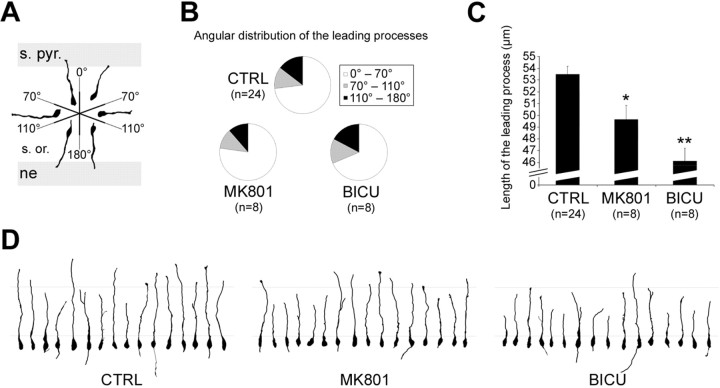Figure 3.
Treatment with receptor antagonists affects the length of the leading processes of migrating neuroblasts without affecting their orientation. A, The orientation of the leading processes is evaluated with respect to the correct direction of migration (corresponding to an angular deviation of 0°). Migrating neuroblasts located in the migration area [i.e., the neuroepithelium (ne) and the stratum oriens (s. or.)] and on their way to the stratum pyramidale (s. pyr.) are distributed into three groups, depending on their leading processes orientation: (1) cells with leading process orientations that deviate from 0° to 70° of the correct direction of migration; (2) cells with leading process orientations that deviate from 70° to 110°; and (3) cells with leading process orientations that deviate from 110° to 180°. Six reconstructed migrating neuroblasts are shown (2 per group). B, Distribution of the migrated cells into the three groups explained in A, after culture for 1 DIV in the absence of any treatment, in the presence of MK801, or in the presence of bicuculline. The number of experiments is given in parentheses. C, Length of the leading processes evaluated after 1 DIV in the absence of any treatment, in the presence of MK801, or in the presence of bicuculline. Data are expressed as ±SEM, and the number of experiments is given in parentheses. *p < 0.005; **p < 0.001. D, Length of the leading processes evaluated after 1 DIV in the absence of any treatment, in the presence of MK801, or in the presence of bicuculline. Sixteen reconstructed migrating neuroblasts are shown per condition. The distance between the gray horizontal bars is 50 μm. CTRL, Control, absence of any treatment; BICU, bicuculline.

